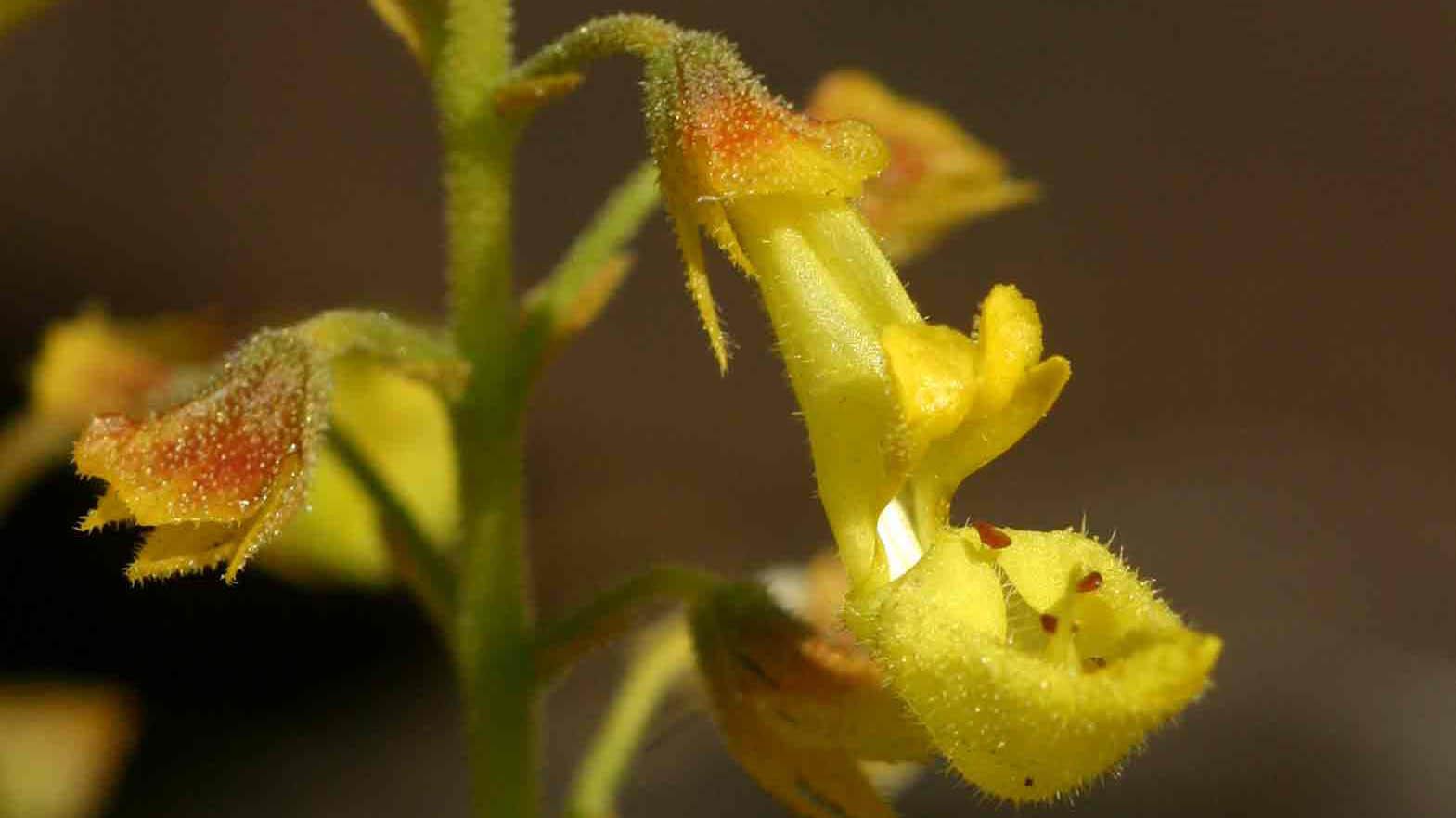Geography and distribution
Plectranthus esculentus occurs in dry wooded areas in equatorial Africa, and southwards to Angola, the eastern Transvaal and KwaZulu-Natal coast of South Africa, and Swaziland.
Description
This sparsely branched perennial herb grows up to 2 m tall and produces a cluster of small, branching, edible tubers (swollen underground stems) at the base of the stem. Flowers are produced before the leaves and the stems are leafless while the plant is in flower. The yellow flowers are two-lipped, and carried on short, densely crowded branches. The leaves have toothed edges and brown gland-dots on the undersurface.
Threats and conservation
This species is not considered threatened, although it has been reported that its cultivation as a traditional crop plant has declined in some parts of Africa as a result of the social stigma attached to native plants, and a growing preference for exotic crops. However, it is being developed for the commercial market in southern Africa.
Uses
Livingstone potato is cultivated in Africa for its edible tubers, each of which may weigh up to 1.8 kg. The tubers persist underground even when the plant lacks leaves. They are dug up and usually boiled or roasted, and are often eaten as a substitute for sweet potato ( Ipomeas batatas ) or potato ( Solanum tuberosum ). Researchers in South Africa are continuing centuries of selection for its edible tubers so as to optimise the crop for local farmers.
Preliminary biochemical analysis of the species suggests it has high nutritional value, being rich in carbohydrates, vitamin A and minerals, and hence is valuable in times of food shortage. This is especially true as the plant is well suited to local environmental conditions in areas where it has a long tradition of cultivation.
Plectranthus esculentus is one of the most frequently used of the 21 species of Plectranthus employed in the treatment of disorders of the digestive system. It is also used in eastern and southern Africa as an antihelmintic to treat intestinal worms. It has cytotoxic and anti-tumour activity.
Further research is needed to determine whether this species is of wider medicinal value. The related species Plectranthus barbatus contains the compound coleonol, which is a potent stimulant that has potential for the treatment of hypertension, glaucoma, asthma and certain cancers.
Millennium Seed Bank: Seed storage
Kew's Millennium Seed Bank Partnership aims to save plant life world wide, focusing on plants under threat and those of most use in the future. Seeds are dried, packaged and stored at a sub-zero temperature in our seed bank vault.
Number of seed collections stored in the Millennium Seed Bank: Six
Germination testing: Successful
Cultivation
Livingstone potato can be propagated from tubers and small axillary bulbils. Tubers should be planted in the spring for harvest the following autumn (tubers can be harvested 180 to 200 days after planting). The crop is reportedly very hardy, but the optimal conditions for growth are a temperature of 15-28 ˚C, annual rainfall of 700 to 1,100 mm and a soil pH of 6.5 to 7. Yields of 2 - 6 tonnes per hectare have been recorded.
Livingstone potato at Kew
Dried and alcohol-preserved specimens of Plectranthus esculentus are stored in the Herbarium (one of the behind-the-scenes areas of Kew), where they are made available to researchers from around the world by appointment. The details of 15 of these specimens, including some images, can be seen in the Herbarium Catalogue.
Livingstone potato tubers are also held in Kew's Economic Botany Collection. Detailed information on this specimen can be viewed using ePIC(the electronic Plant Information Centre).
Research on Plectranthus at Kew
The genus Plectranthus has been the subject of much recent research at Kew, including a survey of its ethnobotanical uses, carried out in collaboration with Dr Catherine Lukhoba of Nairobi University, Kenya.
Three species of Plectranthus are used for their edible tubers in tropical Africa. It is likely that a number of African tuber-producing species were formerly extensively cultivated and have come to be displaced by the most successful, or culturally popular, ones.
Many of the native crops that sustained local populations and early civilisations for centuries are now neglected and unstudied. Some of these crops, including Plectranthus esculentus , have contributed significantly to rural diets and are well adapted to different environmental conditions. Further research on this subject could therefore be of great benefit.





